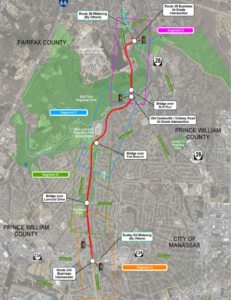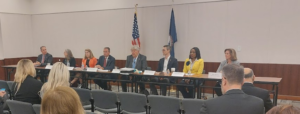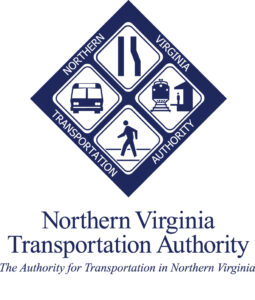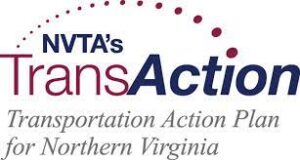Active Prince William emailed the following questionnaire to all 2023 nominees for Prince William Board of County Supervisors seats on September 28, 2023. We will post each candidate’s responses below each question once we receive them. After October 20, we will also identify those candidates who have declined to respond to this questionnaire.
Please note: As a non-partisan advocacy organization, Active Prince William will NEVER endorse or oppose any candidate for elected office. The candidates’ responses (and non-responses) are recorded below–in the order received–simply to educate the voting public.
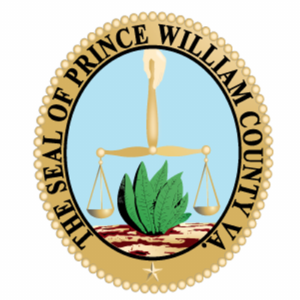
Active Prince William’s Questionnaire for All 2023 Candidates for the Prince William Board of County Supervisors (BOCS)
Active Prince William is an all-volunteer education and advocacy organization that seeks better walking, bicycling, and public transportation options in greater Prince William, Virginia, to create more livable, equitable, and sustainable communities.
This survey, intended for all nominated 2023 BOCS candidates, asks several multiple-choice questions concerning our organization’s current issue priorities. Each question, highlighted in bold, is preceded or followed with brief background information. Candidates are invited to elaborate on their answers in the final question.
For a few of the questions, we’ve recently added more background information. The newly added information is underlined and bracketed by *** at the beginning and end and also shown here in a red font.
Candidate responses will be posted verbatim on Active Prince William’s website, to inform voters about your positions regarding these issues. Thank you in advance for completing our questionnaire!
Please feel free to email us at [email protected] if you need more information or clarification regarding any of these questions.
Early and proactive community involvement in the development of significant transportation improvement projects ensures that the community’s needs and preferences are well integrated into the selection and scope of those projects. Currently, however, the Board of County Supervisors routinely endorses staff recommendations for non-local transportation funding requests with minimal public notice or opportunities for citizen comment.
*** If the BOCS were to require the PWC Department of Transportation to present–at one annual advertised public hearing–all transportation projects being considered in the coming year for various non-local transportation funding programs, both the Department and the BOCS could obtain valuable community input near the very beginning of the project development process. ***
Question 1: Do you support requiring the PWC Department of Transportation to hold advertised public hearings before the Board of County Supervisors is scheduled to endorse any future applications for regional (e.g., NVTA, NVTC Commuter Choice), state, or federal transportation improvement funds? *
- Andrea Bailey, Potomac District (incumbent)
- Verndell Robinson, Potomac District
- Deshundra Jefferson, Chairman At Large
- Bob Weir, Gainesville District (incumbent)
- Margaret Franklin, Woodbridge District (incumbent)
- Victor Angry, Neabsco District (incumbent)
- Tom Gordy, Brentsville District
- Kenny Boddye, Occoquan District (incumbent)
Except for Prince William County, virtually every local governing body in our region has an adopted master plan for active mobility (walking, rolling, and bicycling) that articulates policies, programs, and strategic actions to effectively and expeditiously develop well-connected pedestrian, bikeway, and trail networks; provide equitable non-motorized access and mobility for the entire community; and ensure the safety of vulnerable road users.
Question 2: Do you support directing the County’s Planning Office, Department of Transportation, and Department of Parks & Recreation to jointly develop a robust countywide plan for expanding active mobility (pedestrian, bikeway, and trails) infrastructure and programs, ideally using an extensive community engagement process and hiring an experienced outside consultant team, well versed in suburban active mobility planning, to organize and coordinate this vital community planning initiative?*
- Victor Angry, Neabsco District (incumbent)
- Tom Gordy, Brentsville District
- Kenny Boddye, Occoquan District (incumbent)
- Andrea Bailey, Potomac District (incumbent)
- Verndell Robinson, Potomac District
- Deshundra Jefferson, Chairman At Large
- Bob Weir, Gainesville District (incumbent)
- Margaret Franklin, Woodbridge District (incumbent)
Prince William County is fortuitously situated along four designated long-distance non-motorized or multi-modal travel routes; namely, the Potomac Heritage National Scenic Trail, the East Coast Greenway, the Washington-Rochambeau Revolutionary Route, and U.S. Bicycle Route 1. (The first three routes listed above would meander along the Route 1/I-95 corridor between the Town of Occoquan and Triangle, whereas US Bicycle Route 1 runs generally southwest from the Town of Occoquan to Independent Hill and Aden, exiting the County on Fleetwood Drive). In addition, both the National Capital Region Transportation Planning Board (TPB) and the MWCOG Board of Directors endorsed a 1,400-mile National Capital Trail Network in the summer of 2020, and, in June 2022, the TPB adopted a transportation-sector climate strategy to complete all currently planned segments of the National Capital Trail Network by 2030.
Question 3: Do you support a formal commitment by the Board of County Supervisors to complete all planned Prince William County segments of the National Capital Trail Network, the Potomac Heritage National Scenic Trail, and the East Coast Greenway by the year 2030? *
- Victor Angry, Neabsco District (incumbent)
- Tom Gordy, Brentsville District
- Kenny Boddye, Occoquan District (incumbent)
- Andrea Bailey, Potomac District (incumbent)
- Deshundra Jefferson, Chairman At Large
- Bob Weir, Gainesville District (incumbent)
- Margaret Franklin, Woodbridge District (incumbent)
- Verndell Robinson, Potomac District
Most large NoVA localities, including Fairfax County, Arlington, and Alexandria, have citizen transportation advisory commissions—appointed by and reporting to the governing body–to act as community advocates, assist with public outreach, and give timely advice to the governing body on diverse transportation issues, policies, planning, programming, and project designs and features. (Loudoun County still only has a Transit Advisory Board that is focused on public transportation).
*** Several years ago, the BOCS directed the PWC Department of Transportation to engage the Planning Commission as a transportation advisory body. However, that initiative has not produced effective citizen involvement: planning commissioners may lack transportation policy expertise; the transportation project briefings are an added burden; and the meetings have not allowed meaningful public comment on transportation matters. ***
Question 4: Do you support having the Board of County Supervisors establish a citizen Transportation Advisory Commission that is separate from the Planning Commission?*
Yes:
- Victor Angry, Neabsco District (incumbent)
- Tom Gordy, Brentsville District
- Andrea Bailey, Potomac District (incumbent)
- Verndell Robinson, Potomac District
- Bob Weir, Gainesville District (incumbent)
- Kenny Boddye, Occoquan District (incumbent)
- Deshundra Jefferson, Chairman At Large
- Margaret Franklin, Woodbridge District (incumbent)
Over the past decade, Fairfax County and other Virginia localities have actively used VDOT’s scheduled roadway resurfacing program to cost-effectively reconfigure scores of roadways to improve safe access for people walking and bicycling.
Question 5: Do you support directing the PWC Department of Transportation to actively engage with VDOT’s annual roadway repaving program to cost-effectively reallocate existing roadway space to better serve pedestrians, bicyclists, transit riders, and motorists?*
- Victor Angry, Neabsco District (incumbent)
- Tom Gordy, Brentsville District
- Kenny Boddye, Occoquan District (incumbent)
- Andrea Bailey, Potomac District (incumbent)
- Deshundra Jefferson, Chairman At Large
- Margaret Franklin, Woodbridge District (incumbent)
- Verndell Robinson, Potomac District
- Bob Weir, Gainesville District (incumbent)
The proposed Route 28 Bypass (Godwin Drive Extension) along the Flat Branch and Bull Run floodplains would remove more than 50 affordable housing units in a designated Equity Emphasis Area, establish a permanent freeway barrier between the West Gate/Sudley and Loch Lomond communities, foster more exurban sprawl and long-distance drive-alone commuting from west and south of Prince William County, and increase traffic congestion and delays along Centreville Road in Fairfax County. Moreover, due to inflation since 2019, the roughly $300 million already earmarked for this project (including $200 million from the County’s 2019 transportation bond referendum that PWC taxpayers would then repay over perhaps two decades) may not cover all construction costs.
Meanwhile, both our organization and the Prince William County Trails and Blueways Council have formally commented that the recently proposed shared-use path component of this highway project is substantially inadequate.
Question 6a: Do you agree than any Route 28 Bypass should include a robust shared-use path component–both along and across the Flat Branch stream valley and with multiple connections to the adjacent neighborhoods—as recommended by both the Trails and Blueways Council and Active Prince William?*
- Tom Gordy, Brentsville District
- Kenny Boddye, Occoquan District (incumbent)
- Andrea Bailey, Potomac District (incumbent)
- Deshundra Jefferson, Chairman At Large
- Bob Weir, Gainesville District (incumbent)
- Margaret Franklin, Woodbridge District (incumbent)
- Victor Angry, Neabsco District (incumbent)
- Verndell Robinson, Potomac District
Question 6b, also related to the proposed Route 28 Bypass: Would you support asking the Upper Occoquan Service Authority (UOSA) to grant immediate public access to UOSA’s existing service road along this corridor as a key component of a shared-path network along and across the Flat Branch stream valley?*
- Victor Angry, Neabsco District (incumbent)
- Tom Gordy, Brentsville District
- Kenny Boddye, Occoquan District (incumbent)
- Andrea Bailey, Potomac District (incumbent)
- Deshundra Jefferson, Chairman At Large
- Verndell Robinson, Potomac District
- Bob Weir, Gainesville District (incumbent)
- Margaret Franklin, Woodbridge District (incumbent)
Question 6c, also related to the proposed Route 28 Bypass: When this highway project’s design, costs, and myriad impacts are more fully known in spring 2024, would you support the Board of County Supervisors objectively reevaluating the pros and cons of this controversial project and considering significant modifications or even a partial or full cancellation?*
*** On October 10, 2023, the BOCS authorized pursuing a potential alternative alignment (“Modified Alternative 2A”) that would not cross Bull Run into Fairfax County, because Alternative 2B, which was advanced for preliminary engineering in September 2020, may not be feasible for various reasons (cost, project impacts, and/or right-of-way acquisition issues). Besides displacing additional affordable dwelling units, Modified Alternative 2A would create a substantial new bottleneck on Centreville Road in Yorkshire, necessitating an additional bridge and road-widening project in both Fairfax and Prince William Counties. ***
[As examples, substantial project changes might include 1) use automated tolling to both finance construction (in lieu of County bonds) and manage transportation demand and/or 2) construct the project segment across and north of Bull Run with the existing NVTA funds and separately expand Old Centreville Rd (possibly as part of an extended multi-locality, multi-modal transit-oriented-development corridor)–in lieu of extending Godwin Dr–to reduce net residential displacements and preserve the Flat Branch stream valley as valuable and much-needed regional parkland.]
- Tom Gordy, Brentsville District
- Verndell Robinson, Potomac District
- Bob Weir, Gainesville District (incumbent)
- Victor Angry, Neabsco District (incumbent)
- Kenny Boddye, Occoquan District (incumbent)
- Andrea Bailey, Potomac District (incumbent)
- Deshundra Jefferson, Chairman At Large
- Margaret Franklin, Woodbridge District (incumbent)
Tom Gordy, Brentsville District:
I am an outdoorsman. I love fishing, kayaking, hiking, boating, and fishing. I also travel extensively due to being a Navy Reservist and have been tremendously impressed by the trail networks in German cities like Stuttgart, where you see families spending their weekends on bike trails visiting local recreational sites and historical sites along with the occasional beer garden. I have a vision to be able to get from the Potomac to the Manassas Battlefield by trail, visiting local, state and national parks, and agribusinesses and agritourism sites along the way. I also support providing more and better access for blue trails in the county that allow residents to experience all of the beauty our county has to offer. Providing more bikeable and walkable communities must be a priority, but that means having a more disciplined and intentional planning and development program. Thank you for what you are doing to support these initiatives. You will always have an open door with and advocate in me if I am honored to be elected.
Kenny Boddye, Occoquan District (incumbent):
I’m committed to more transparency as it pertains to mobility in Prince William County. I gave a directive several years ago to have large scale transportation projects and grant applications heard at the Planning Commission level, which hadn’t been done before. I also still support creation of a Mobility subcommittee of the Planning Commission.
I’ve also been a vocal supporter of more robust multi-modal transportation planning. I supported and gained additional suuport for the DRPT Springfield to Quantico Enhanced Public Transportation Feasibility Study. I endorsed the Mobility chapter updates and Future Transportation Alternatives of the new Comprehensive Plan; I also directed staff to improve upon them by adding the aspirational trails map drafted by the Trails and Blueways Council. Finally, I had BOCS support for exploring bi-directional HOV lanes on I-95 added to the Comprehensive Plan Update.
I’ve also been an advocate for ped/bike/motorist safety improvements. Last year I called for a BOCS Work Session on Traffic Safety, which led to the creation of pilot programs for red light cameras and speed cameras, as well as the county getting a grant to develop its first Comprehensive Traffic Safety Plan.
Andrea Bailey, Potomac District (incumbent):
This application/questionnaire intrigued me because I am a strong advocate of improvements in transportation and mobility. I serve on the NVRC and PRTC Boards. Both boards have made major impacts on data driven solutions to improve mobility and community engaged changes for citizens to enjoy and travel in Northern Virginia. I believe that citizen participation is necessary to create transparency of needs in our region.
I need more information on item 6c in order to give a definite answer.
Verndell Robinson, Potomac District:
#3 Does this include the Potomac Tech Park that is planned next to Forest Park?
#5 What are the requirements for applying for the VDOT scheduled roadway resurfacing program?
#6a & b: this needs to be studied to determine an answer.
Deshundra Jefferson, Chairman At Large:
I am committed to using a multimodal approach to make it easier to get around the county, and I look forward to working with you to make that happen.
###
